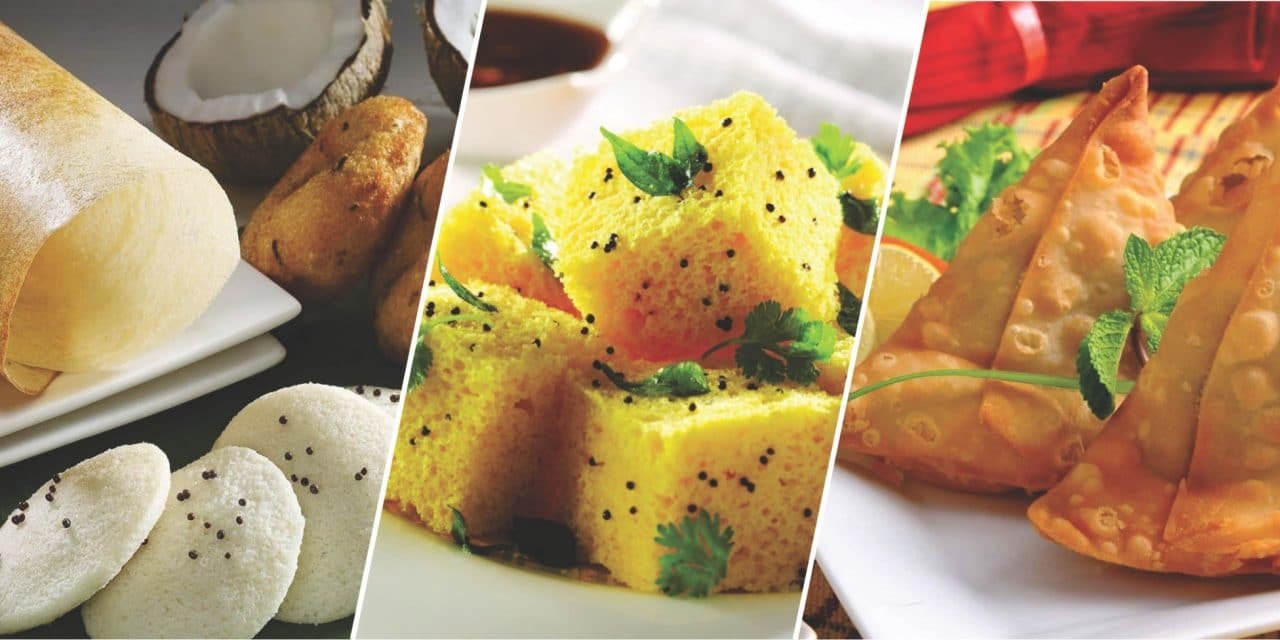Every cuisine is a billion-dollar opportunity and may create 100 new start-ups in every state. Indian traditional foods are nutritious, tasty, and suitable to local climate and traditions. The market size of Indian traditional foods within India is Rs. 1300 million-plus global Market. For global markets, Indian traditional foods offer varieties to consumers always looking for new taste and options, writes Vijay Sardana.
Table of Contents
India is known as a land of taste and traditional foods. Most of the traders came to India to explore the opportunity to trade with India. History will also support that India was attacked and raided by outsiders because of our wealth and taste for good things. Those who could not afford to compete with the quality and taste of India raided India to loot the wealth of India and also to destroy India’s taste and tradition to protect their own against competition from India.
Unfortunately, after independence, due to short-sighted political considerations, we ignored building on the inherent strengths of India — our globally admired art and culture including traditional foods. This costed India’s economic development in terms of employment opportunities and foreign exchange and also respectful social and political interaction. In the absence of our time-tested cost-effective traditional foods as healthy options, society moved towards imported and expensive concepts of junk foods in the name of pseudo-development and modernization.
Reasons for the poor development of the traditional food industry
Concerned departments and ministries looked towards the west to learn about the food industry. Their own ignorance reflected in policy-making. They ignored the fact that India has a long tradition of 5000 years of feeding healthy foods to society while ensuring sustainable and healthy food habits based on the locational and regional needs of society.
Unfortunately in place of improving the commercial parameters like shelf-life and packaging requirements of traditional foods our researchers and policymakers blindly copied and promoted products which were not only inferior in nutritional value and taste in comparison to our own home-grown traditional foods. This inferiority complex supported by ignorance at policy-making costed huge employment opportunities and destroyed our skill sets. There was no support and investment to work on relevant food laws, relevant packaging, the relevant distribution system and marketing plans. Nothing must have changed even till date.
Indian food law authorities have done nothing to support and promote Indian traditional foods. To date, they are busy making and refining laws for western products. There is no attempt to make laws for traditional foods which are globally accepted.
The silver lining in the traditional foods
When multinational food companies came and realized the business potential of traditional foods, they started working on Indian traditional foods. Many NRIs also started developing Indian traditional foods in their new place of work. Only then we started realizing the merit of Indian traditional foods.
Without any encouragement from any research institution, policy support from any government department and sensible food laws, etc, this sector was ignored and left alone to survive. However, many sensible companies explored this space and became leading food companies in the country like Haldiram, MTRs, and many other regional players. This clearly indicates that traditional foods have the potential to attract the market both within Indian as well as in global markets and flourish against all odds.
What is the way forward?
Indian traditional foods are time-tested and globally accepted. There are 30 states in India and every state has a huge treasure of traditional knowledge in terms of traditional foods and traditional art and culture for various occasions.

Proposals for policymakers and investors
I have the following proposals for both policymakers and investors to consider:
- Every state government must mandate the concerned department and local university to set up a fund to support and promote traditional foods and adopt modern technologies to access the global markets. This will glorify the states’ tradition world over.
- There must be a pilot plant in every food department to work on traditional foods and develop a course on traditional foods. Today, the growth of Chinese medicine and foods around the world is due to the focused efforts of the Chinese government to develop and promote Chinese products globally. Why can we not learn from China if our ideas and approaches are not delivering expected results? Let us remain open to learning better ways of working.
- Indian food law authorities have done nothing to support and promote Indian traditional foods. To date, they are busy making and refining laws for western products. There is no attempt to make laws for traditional foods which are globally accepted. This shows misplaced priority and ignorance in the concerned departments. This ignorance adds to the problem for exporters of traditional food manufacturers from India. These exporters are left alone to defend the issues with buying countries. This is hurting exports of traditional foods from India.
- Food Safety and Standards Authority of India (FSSAI) is not even ready to ensure the safety and quality parameters of traditional foods due to lack of rules, testing methods, sampling, and laboratory procedures for traditional foods. In absence of any clear rules, all interpretation is left to food inspectors’ and laboratory analysts’ intelligence. This is hurting the image and goodwill of traditional foods because adulterated foods existing in the market and there are no checks by food inspectors and due to corruption.
The massive supply of adulterated foods to the common man is shaking the confidence of consumers on national foods and hurting the growth of the traditional food industry. There must be a dedicated task force under the guidance of a team of experts from the traditional food industry to educate the policymakers and lawmaking agencies. This is the time to learn about the strengths of India. - FSSAI must set-up a task force to work on all aspects of food safety, food formulations, additives required, sampling and testing methods, nutritional labeling and claims so that quality of the traditional food products can be delivered to consumers globally in a time-bound manner.
- Packaging research centers must invest resources in developing suitable packaging for these nutritious and traditional foods to extend the shelf-life and to make it convenient for transportation and consumption including for export markets.
- Some companies have initiated the process, but they are regional players only. The government must work out a “National Investment and Technology Plan for Traditional Foods” like what is done for AYUSH i.e. traditional medicines and yoga. This must help in customization based on the needs of the global market and laws.
- If the government works-out a meaningful policy, Indian traditional foods which are nutritious and healthy diets can easily be USD 100 billion market world over and may create millions of jobs.
- Traditional food is a huge opportunity for Start-ups and private equity companies. This space must be explored because this can easily be USD 100 billion industry soon and may engage for at least 10 million people in small towns and rural economies if policymakers extend required support to the traditional food industry.
- If we will fail, companies in other countries will fill the gap. Even today. many Indian pickles, spice mixes, snack foods are now made in many countries of the world and exported. They carry brand names from India but they are not made in India.
- Will ‘Swadeshi Brigade’ looks at this vital sector, which can create employment, attract investment and ensure exports. Can we make traditional foods a priority for FSSAI, Ministry of Food Processing and research agenda at Food Research Institutes of CSIR, UGC, and ICAR?
“Achhe Din” i.e. brighter days are expected for traditional foods.
















